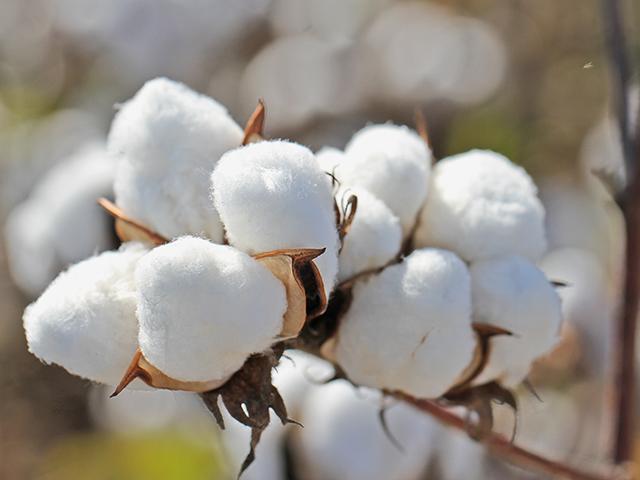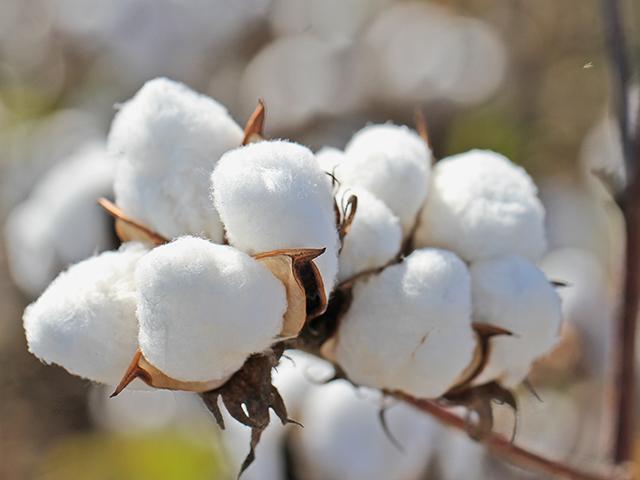Production Blog
Cotton and Kenny Rogers: Growers Hold a Volatile Hand in 2023
JEFFERSON CITY, Mo. (DTN) -- "You got to know when to hold 'em, know when to fold 'em."
This sage advice -- penned by hall of fame songwriter Don Schlitz and made famous by the late, great Kenny Rogers -- may befit many "gamblers" in agriculture but perhaps none better than U.S. cotton growers.
In 2022, there were farmers who knew it was time to "hold 'em," producing their best-ever cotton crop and earning a fair profit amid high input costs. Then there were many others forced to "fold 'em" due to extreme drought conditions, primarily across the West and Southwest. More than 13.7 million acres were planted to cotton last year, but only 7.4 million made it to harvest -- the fewest acres harvested since 1983, according to USDA. The 46% abandonment rate was the highest on record since 1953.
Yet, despite the failure of nearly half the U.S. crop, the price for cotton actually fell throughout the year. USDA reported the spot price for cotton reached its peak during May 2022 with an average high of roughly $1.40 per pound. By the end of the year, cotton was trading around 85 cents per pound, a level at which it remains.
The reason for the declining cotton price throughout 2022 was that worldwide demand for the fiber faltered. Rising inflation, the war in Ukraine and the lingering effects of the COVID-19 pandemic, especially in China where lockdowns remained for much of 2022, all contributed.
"World mill use is the one variable that drives this train, and it's a weakness in demand as much as it is about production at this point," Darren Hudson, professor of agricultural and applied economics at Texas Tech University, said during the Deltapine New Product Evaluator (NPE) Summit this past December. "Other things equal, if we were on a normal trajectory for mill use, the 2022 U.S. crop would have really bumped prices. But if people are not willing to consume cotton, it doesn't matter how efficient production is."
So, as the time nears for cotton growers to ante up for this growing season, what kind of hand can they expect to be dealt?
The first "tell" for cotton in 2023 came in the form of the National Cotton Council's (NCC) Early Season Planting Intentions Survey, the results of which were released Feb. 12. NCC mailed a questionnaire to producers across the 17-state Cotton Belt back in mid-December, asking them for the number of acres devoted to cotton and other crops in 2022 and the acres planned for the upcoming season. Survey responses were collected through mid-January.
The survey determined that U.S. cotton growers intend to plant 11.4 million acres of cotton in 2023, a 17% decline from last year. Using five-year average abandonment rates -- along with a few state-level adjustments to account for current dry conditions -- NCC estimated an abandonment rate of 22.6% for 2023, leaving a total harvested area of 8.8 million acres. Using the five-year average state-level yield per harvested acre generates a cotton crop of 15.7 million bales, roughly a half-million more than in 2022.
P[L1] D[0x0] M[300x250] OOP[F] ADUNIT[] T[]
Some cotton growers, like Kip Roberson of Robersonville, North Carolina, had a productive year in 2022. His operation averaged 2 bales of cotton per acre, and he looks to stay the course in 2023. Fertilizer and pesticide costs remain his biggest concerns.
"Input prices are still a big deal, but they've continued to fall," he told DTN during the NPE Summit. "It'd be nice to get cotton back to $1 per pound where I feel like it needs to be, but if we can get somewhere between 80 and 90 cents, I think we can have a profitable year in 2023."
Like Roberson, cotton grower Joe Huerkamp from Macon, Mississippi, also dealt with issues of high costs and decreased availability of inputs in 2022.
"We had a phenomenal crop on the plant until August when we had 20 days of drizzly rain. Consequently, we had a lot of boll rot," he told DTN. "We still came out above 2.5 bales."
Huerkamp explained he typically maintains a 60/40 cotton-corn rotation on his farm. But in 2023, he said it's a toss-up as to what percentage he'll plant to each.
"In the more recent past, cotton tends to pay the bills a little more consistently than corn does," he said. "We can actually plant a cotton crop cheaper than corn. The Bt cotton varieties have made a tremendous amount of difference. We're not spraying bugs like we used to."
Unlike last season, when he locked in input prices by early December, Huerkamp opted to take a wait-and-see approach for 2023. He cut back some on his fall fertilization program, hoping that prices would continue to decrease.
"It was expensive. The most we've ever spent," he said. "It's eased down a little bit, but commodity prices are sliding, too. The more corn falls, the more it pushes me toward cotton."
Farther north, Bob Walker of Somerville, Tennessee, dealt with wet conditions early in 2022 that led to both delayed planting and replanting, putting his cotton crop behind. A 60-day stretch of dry weather that followed led to some additional struggles.
"We made it through and had a good-looking set going, but we just really had a hard time finishing the crop out," Walker said. "We needed some more heat and humidity in September and October, and with that, we would have been able to finish a little stronger."
Though the drought kept his operation's overall production below average, Walker said it gave him the opportunity to evaluate his cotton varieties.
"All varieties look good in a great growing season, but we had some that showed out in those dry conditions," he said. "We'll look to some of those varieties a little bit more, particularly on our dryland acres."
Walker said he doesn't anticipate a huge swing in acreage for his corn-soybean-cotton operation, reducing his cotton acres by no more than 10%. Like Roberson and Huerkamp, he also is watching input costs, though he added labor availability as a growing concern.
"Right now, they're building a big Ford plant next to us," he said. "They're promising lots of high-paying jobs to people who otherwise would be in the job pool for us, so that's going to bring on a different set of challenges."
The NCC survey indicated acreage decreases are expected in all U.S. cotton-growing regions in 2023. The greatest contraction is anticipated in the Southwest and West regions, with 19.6% and 33.7% fewer cotton acres, respectively.
Hudson said cotton growers need to recognize that until global disruptions such as COVID-19 dissipate and markets normalize, volatility will be the name of the game. Like every gambler knows, the secret to surviving that volatility will be knowing what to throw away and knowing what to keep.
"Volatility is both a cost and an opportunity," he said. "You've got to think of it that way and not be afraid of it. Instead, growers should have a plan for how they're going to manage that volatility and stick to it. Then, when things move, they need to be ready to capitalize."
In its economic outlook, NCC noted a more positive tone, as world consumption is projected to increase by 4.7% this year. Cotton growers will hold out hope that any rally occurs before planting time, but they won't be counting their money just yet. The proverbial dealing isn't done.
Jason Jenkins can be reached at jason.jenkins@dtn.com
Follow him on Twitter @JasonJenkinsDTN
(c) Copyright 2023 DTN, LLC. All rights reserved.






Comments
To comment, please Log In or Join our Community .